Question We have three Bala Sharks and I walked in the room yesterday morning to start the tank's light cycle for the day, and give them their food. I scan the tank for any uprooted plants, and I see my poor little bala shark has a frayed dorsal fin and half of the clear part of his fin some of his scales(outlines) are dark blood red. There isn't anything growing on him, no white spots nothing translucent, anything. I checked our other balas, and there wasn't anything on them, fins and scales are perfect.
This morning I walked in, his fin and scales are still red, and torn, nothing growing on them, but I find my black mollie.. topside. Her fins frayed, and her scales look like they have been pulled/scraped off. I don't know what's going on! My bala is still living, but I need to know what is killing/attacking my poor fish. Nothing like this has ever happened the entire time we've had this tank. Please help me!
My tank has been set up for five months, it's an 85gal.
Here is the fun part, our fish include; Mollies, Bala sharks, cory cats, ghost knife, rope and dinosaur eel, normal and florescent danios, a banjo, tiger barbs, guppies, and plecos. A grand total of 23 fish.
The filter in the tank is a carbon, Whisper model.
I just ran a check on all of the levels in the tank all are within EXCELLENT results.
We change 10gal every two weeks, and keep the tank floor pretty clean of most waste, but leave some for the pleco and the little shrimp (a feeder who survived.)
We also have a 10gal quarantine tank for any new arrivals, all of it's levels are excellent as well, and cleaned regularly, and done to the highest degree, to prevent any diseases. We even quarantine our feeder fish for our rope fish/eel. [He eats TINY neons and rosys]
AnswerHi Angel;
I would suspect that one of your nocturnal fish is nipping the others at night when they can't see to get away. Even though the types of fish that are out during the day don't really "sleep", they do rest somewhere in the tank at night, usually near the bottom, because they can't see in the dark. They just become very still and hide until morning.
The ghost knife, dinosaur eel (senegal bichir), and rope are all suspects. Even though ropes and dinosaurs are not known to be particularly aggressive they will search for food at night and if they happen to be hungry and come across a sleeping fish they will bite it. All it takes is one bite to inflict serious injury. Bala sharks are very nervous guys too so he could easily have overreacted and banged himself on the tank, tank lid or decorations somewhere and cause more damage to himself. Ghost knife fish can be very aggressive to other fish, especially if their territory is invaded. They also have electrical impulses on their sides that they use to navigate, hunt and fight rivals with. The electrical impulses aren't very strong but even a slight shock can really frighten fish enough that they hurt themselves. Repeated zaps can injure them and send them into a serious case of shock. Knife fish could also bite other fish and cause injury. A fish that can't see at night would be an easy target. All it takes is for it to accidentally drift into the wrong spot and he becomes a victim.
Provide plenty of hiding places for all your fish and watch at night with a colored light to see what's really going on. Maybe a red light bulb in a lamp. Most of your fish can't see colored light but you will be able to see them. Hopefully you will catch someone in the act.
You might need to isolate and medicate at least the molly if you see signs of infection. If you need to treat the bala and he is too big for the isolation tank you may need to set up another larger one to treat him. Set up a bare tank with only a heater and air pump hooked to an air stone. You don't want gravel, decorations or a filter. They all absorb medications so they are much less effective. Or, get a brand new large plastic trash bin that has a lid. Mount a submersible heater and use an air pump hooked to an air stone in it and fill it with 50% tap water and 50% tank water, with water conditioner. Make sure the heater is keeping the temperature where you want it before you move him. Move him in a plastic bag of his old tank water as if you were bringing him home for the first time. Float him in the isolation tank/bin for ten minutes before releasing. This will help avoid shock.
I hope your fish get better soon and you can figure out what's going on as you observe them at night...
At Your Service;
Chris Robbins

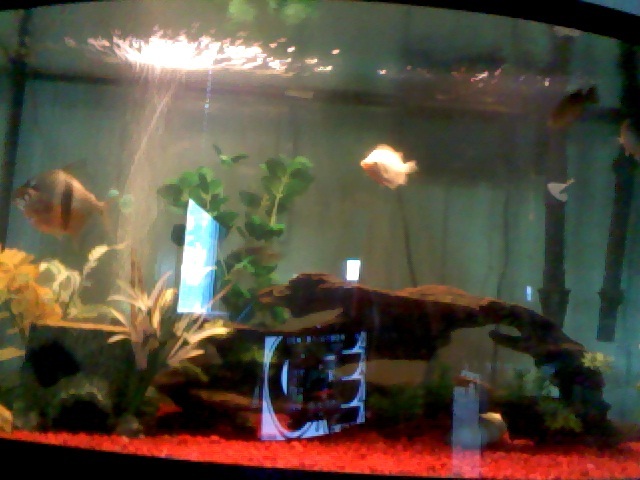 treatment for cat fish
QuestionQUESTION: hello,i have a 46 gallon tank with 2
treatment for cat fish
QuestionQUESTION: hello,i have a 46 gallon tank with 2
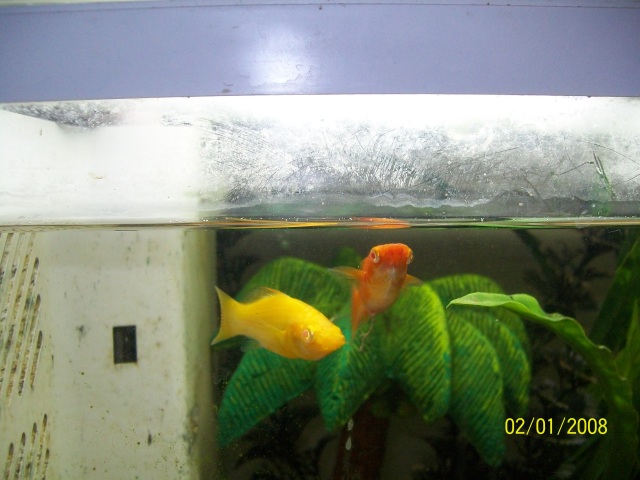 simple question
Question
Mollies
I have 2 orange Mollies. I think one i
simple question
Question
Mollies
I have 2 orange Mollies. I think one i
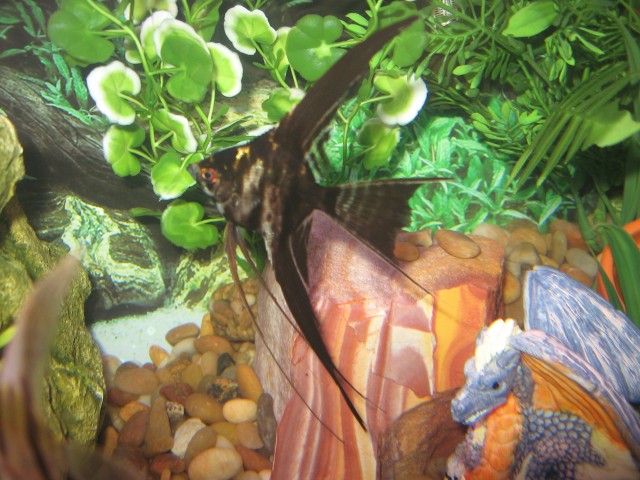 Room for more?
QuestionQUESTION: I got a little carried away last nigh
Room for more?
QuestionQUESTION: I got a little carried away last nigh
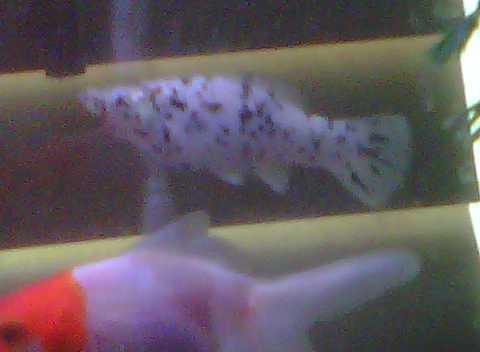 Dalmation Molly
Question
Molly
I think my molly is knocked up, b
Dalmation Molly
Question
Molly
I think my molly is knocked up, b
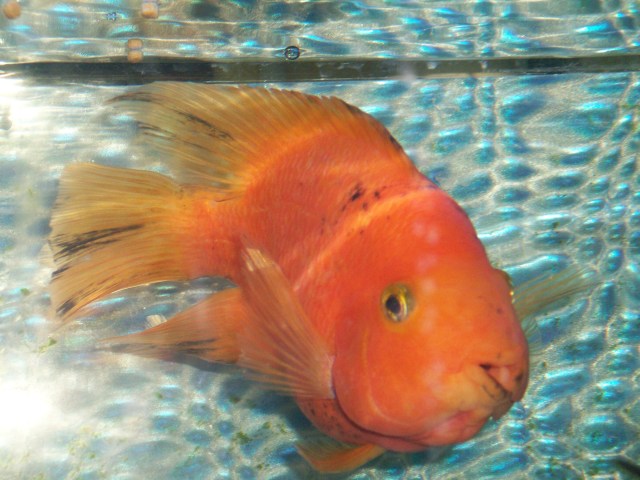 parrot ciclids
QuestionQUESTION: I have a 65 gal tank with 2 orange pa
parrot ciclids
QuestionQUESTION: I have a 65 gal tank with 2 orange pa